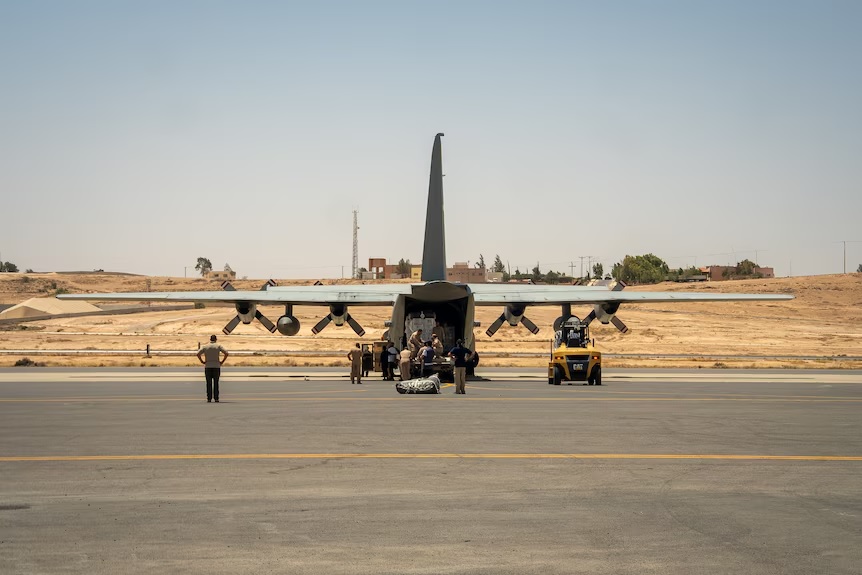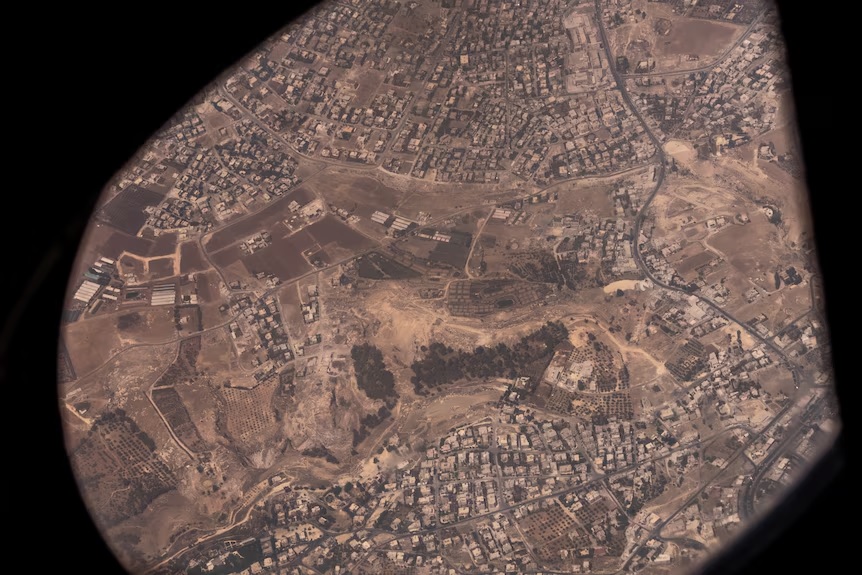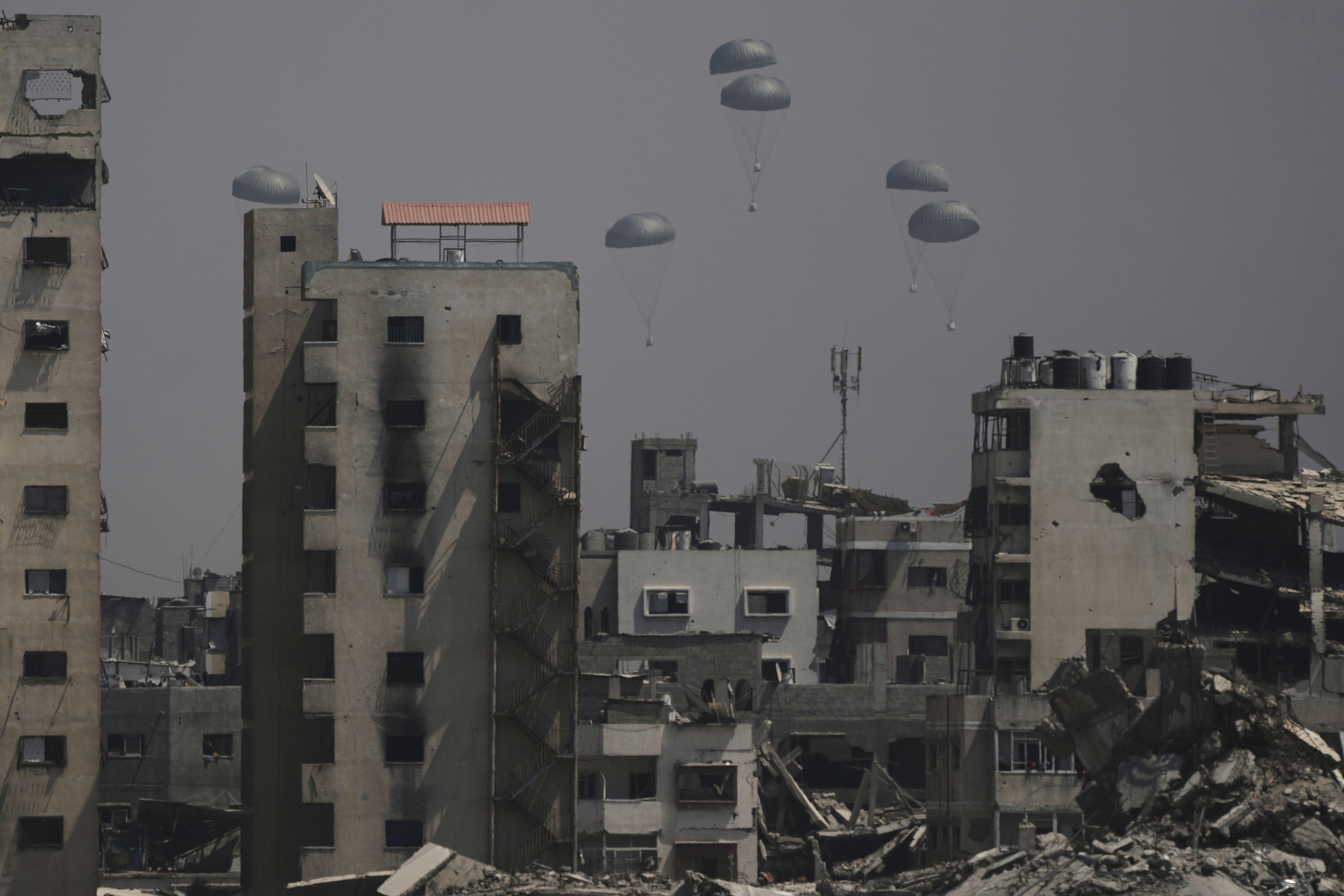An RJAF (Royal Jordanian Air Force) C-130 Hercules transport plane descended toward a strip of land largely cut off from the international media for nearly two years.
As Gaza emerged from the haze, Australian Broadcasting Corporation News reporter Matthew Doran, aboard the Jordanian transport, checked his sunglasses, thinking they were smudged. The muted colors below, however, were the reality of Gaza, shrouded in a thick layer of dust.
Over the past week, Jordan, along with the UAE (United Arab Emirates), Egypt, France, Germany, and Spain, conducted airdrops of aid over Gaza. Israel permitted these operations starting 27/7, but the delivered supplies are a mere fraction of what's needed to address the humanitarian crisis.
 |
Aid being loaded onto an RJAF C-130 Hercules at a base outside Amman. Photo: ABC News |
Aid being loaded onto an RJAF C-130 Hercules at a base outside Amman. Photo: ABC News
Doran and other reporters took off from RJAF's King Abdullah Air Base outside Amman. "On the tarmac were Jordanian and UAE aircraft, along with a larger German Air Force transport," Doran reported. "Crew members carefully loaded aid packages, wrapped in gray canvas, containing mostly food and powdered milk, from trucks into the cargo bay."
The cargo bay, filled with aid, signaled the plane's readiness. The direct flight from King Abdullah Air Base to Gaza City is just over 150 km, but this flight took a longer route.
The Hercules, operated by RJAF's No. 3 Squadron, flew west over Amman, toward the Jordan River, the border between Jordan, Israel, and the West Bank. It then continued over Tel Aviv before reaching the Mediterranean coastal strip.
The Middle Eastern summer isn't known for lush greenery, but the contrast between Gaza and the surrounding areas was stark. The region lacked trees, shrubs, and grass. The remaining buildings amid the rubble were bare concrete shells. The blue Mediterranean Sea sharply contrasted with the desolate land beside it.
 |
View of Gaza from the RJAF plane. Photo: ABC News |
View of Gaza from the RJAF plane. Photo: ABC News
A loud hiss announced the opening of the rear cargo door. Sunlight flooded the bay, revealing the devastation below. The crew, secured near the opening, prepared for the drop.
Following the commander's orders, the crew released 8 parachuted packages. They landed near Gaza City, with video from Palestinian journalists showing them near the Nuseirat refugee camp.
The cargo door closed, and the plane turned back to Jordan, concluding its mission.
However, Jordan and the other participating nations acknowledge the airdrops' limitations. The 8 tons of supplies per flight barely meet the immense need. Humanitarian organizations emphasize that nothing can replace ground aid, as trucks can carry twice the cargo of a plane.
Furthermore, airdrops pose a risk of injury or even death to the people below.
“The emergency in the Gaza Strip is so serious that getting essential items there is absolutely necessary,” a French Foreign Ministry source stated, admitting that air aid barely meets the needs.
 |
Parachutes carrying aid descend upon Gaza City on 28/7. Photo: AP |
Parachutes carrying aid descend upon Gaza City on 28/7. Photo: AP
While the number of trucks allowed into Gaza has increased, it's still far below what's required. UNRWA (United Nations Relief and Works Agency for Palestine Refugees in the Near East), reports approximately 6,000 aid trucks stalled outside Gaza.
According to UNRWA Commissioner-General Philippe Lazzarini on 1/8, "They are waiting for the signal to enter Gaza.”
COGAT (Coordinator of Government Activities in the Territories) reports 1,200 trucks delivered 23,000 tons of food and medicine to Gaza in the past week. The UN, however, estimates a minimum daily requirement of 500-600 fully loaded trucks.
Given the ground restrictions, airdrops remain a crucial lifeline. Jordan and other participating nations hope to continue these missions, but they also dream of a day when Gaza no longer needs aid from the sky.
Thuy Lam (ABC, Le Monde)












